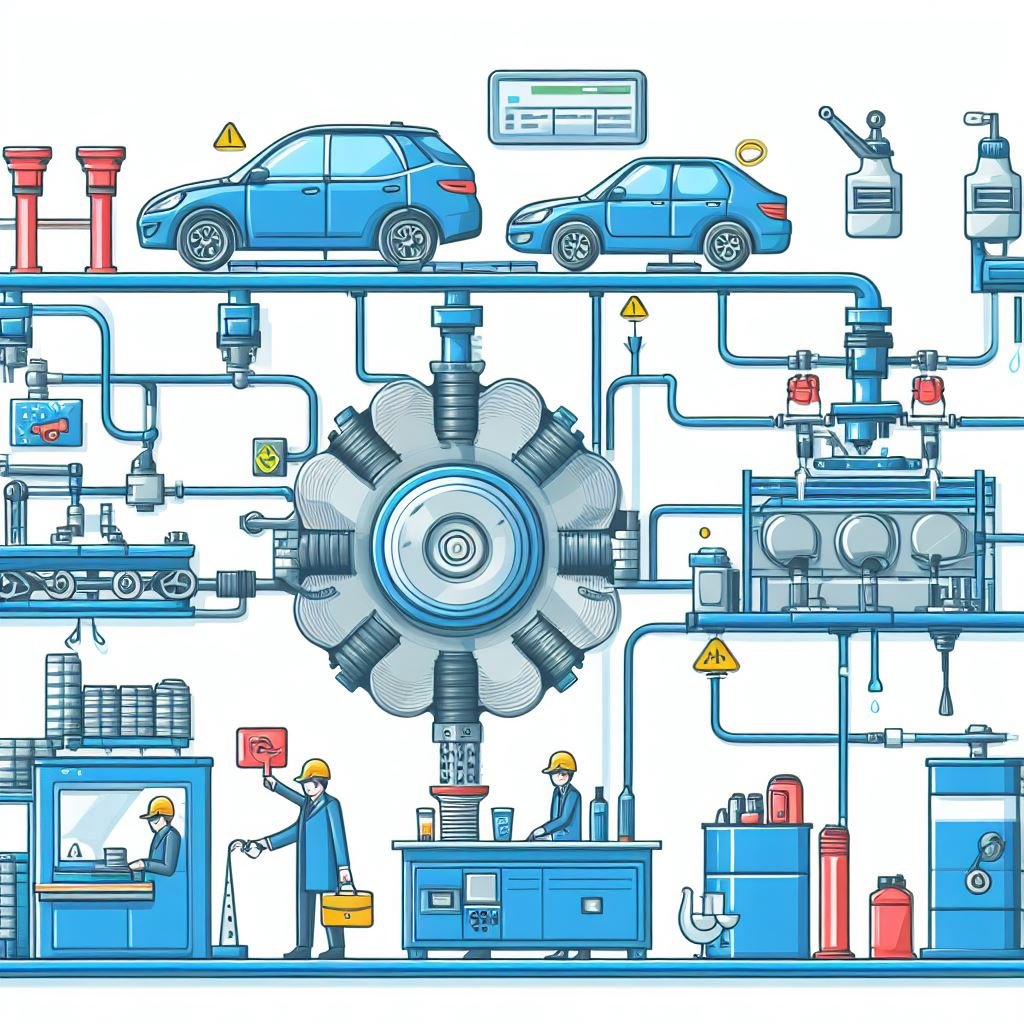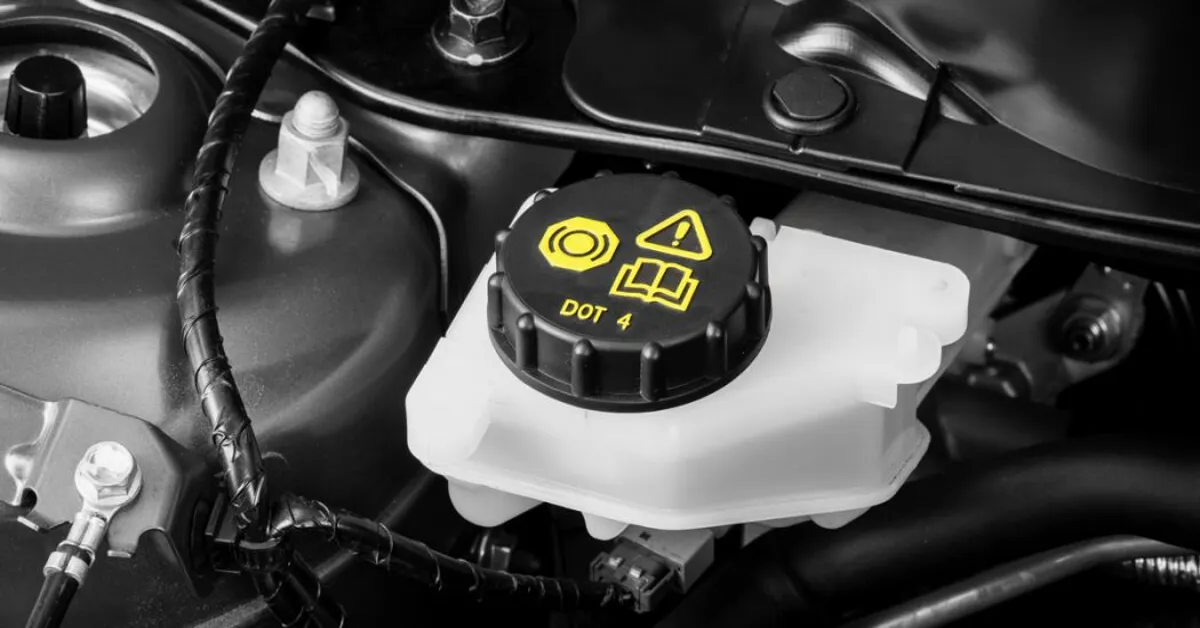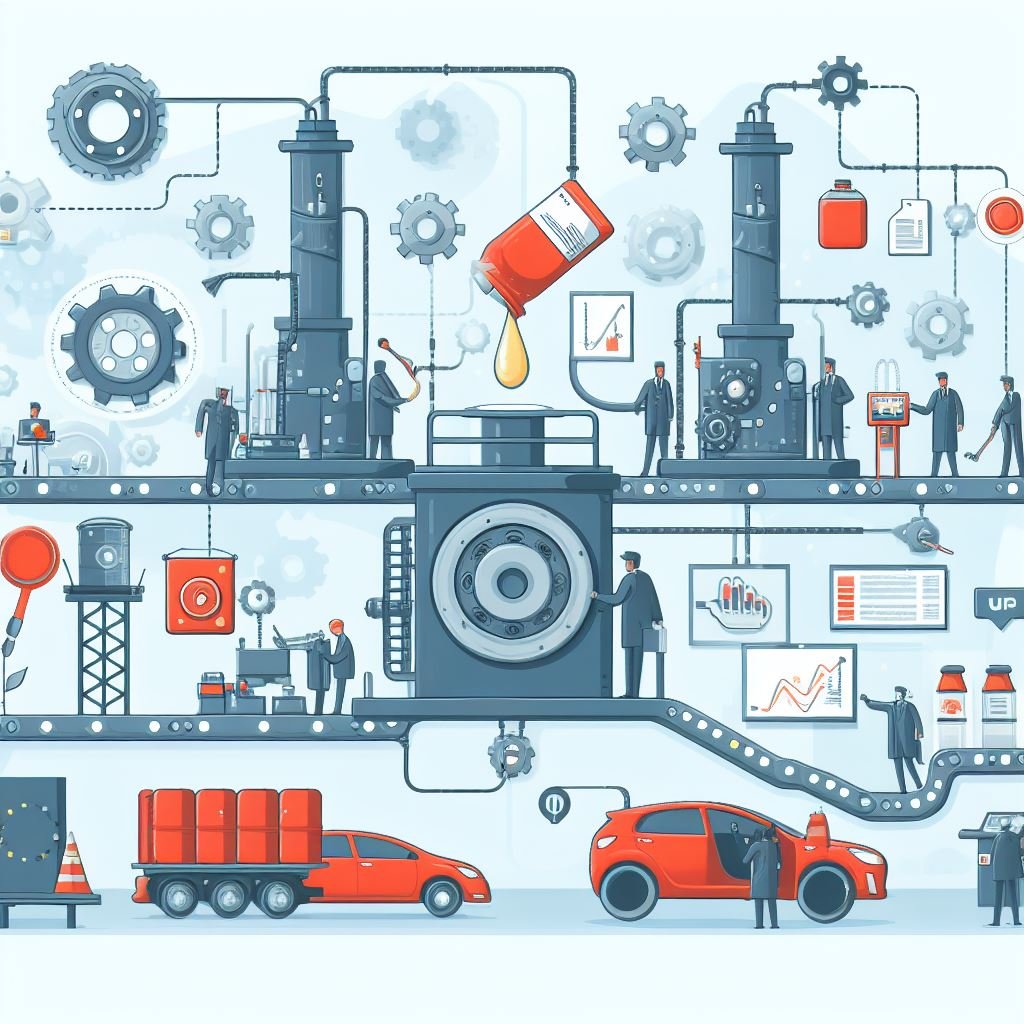Brake fluid is one of the most essential components of a vehicle’s braking system, but have you ever wondered how it is made? Its production is a fascinating process that involves precision and careful selection of ingredients. From the initial concept to the final product, the creation of brake fluid is a well-thought-out process. In today’s blog post, we will take a deep dive into the world of brake fluid and explore the intricate process of how it is made.
Get ready to learn about the inner workings of this crucial automotive fluid and gain a new appreciation for its role in keeping us safe on the road. So buckle up, and let’s get started!
What is brake fluid?
How is brake fluid made? When we get behind the wheel of a car, we trust that its braking system will keep us safe. But have you ever stopped to wonder about the fluid that makes it all possible? Brake fluid is a vital component in a vehicle’s braking system, responsible for transferring the pressure from the brake pedal to the brake pads and ultimately slowing down or stopping the car. But how is this crucial fluid made? Let’s take a deep dive into the process of creating brake fluid and discover the key ingredients and steps involved.

From its origins to its final form, we’ll uncover the fascinating journey of how brake fluid is made. So buckle up and get ready to learn all about this essential automotive fluid.
Why is brake fluid important?
The Secret Behind Safe and Smooth Braking: The Intriguing Process of Making Brake Fluid The feeling of pressing down on the brake pedal and coming to a smooth stop is something we often take for granted while driving. But have you ever stopped to wonder how is brake fluid made and what goes into creating this essential component of our vehicles? Brake fluid is a vital part of our car’s braking system, responsible for transferring the force of our foot on the pedal to the brakes of the wheels. Without it, our cars would be unable to stop safely and efficiently.

- It starts with a careful selection of raw materials, including glycol ethers, borate esters, and polyethylene glycols, which are mixed together in precise proportions.
- The mixture is then heated and stirred continuously to create a clear, colorless liquid with a high boiling point.
- This liquid is then subjected to a series of rigorous tests to ensure it meets the strict safety standards set by the Department of Transportation.
- Once approved, the brake fluid is packaged into sealed containers to prevent any contamination and ensure its quality is maintained.
How is brake fluid made also involves careful labeling and storage to ensure it is transported and stored properly. This is crucial as any contamination or mishandling of the brake fluid can lead to a decrease in its effectiveness and compromise the safety of our vehicles. Next time you press down on your brake pedal, take a moment to appreciate the complex and intriguing process that goes into making the brake fluid that allows you to stop smoothly and safely.
From the selection of raw materials to the final product, every step is crucial in creating this essential component of our cars. So the next time you hit the road, you can do so with the confidence that comes from knowing the secret behind safe and smooth braking.
Composition of Brake Fluid
Have you ever wondered how your car’s brakes are able to stop your vehicle smoothly and efficiently? This essential function is made possible by a crucial component known as brake fluid. But have you ever stopped to think about how this vital fluid is made? Let’s take a deeper dive into the fascinating process of creating brake fluid. First, we must understand that there are different types of brake fluid available in the market, each with its own unique properties and uses.
The most commonly used types are DOT 3, DOT 4, and DOT These fluids are made up of a combination of chemicals, such as polyglycols and glycol ethers, which give them their characteristic high boiling points and low freezing points.
The production of brake fluid begins with the careful selection of these chemicals, which are then mixed in precise proportions to create the desired type of fluid. This process requires strict adherence to industry standards and regulations to ensure the safety and effectiveness of the final product. Once the chemicals are mixed, the resulting solution is then subjected to a series of tests to determine its physical and chemical properties.
These tests include measuring viscosity, boiling point, and corrosion resistance. Any deviations from the required specifications can result in the rejection of the entire batch. After the fluid has passed all necessary tests, it is then packaged and labeled for distribution.
The packaging process is also crucial, as it must be done in a clean and controlled environment to prevent any contamination. But the production of brake fluid doesn’t end there. The manufacturers also have to ensure that the fluid remains at its optimal quality throughout its shelf life.
This is achieved through proper storage and transportation conditions, as well as regular quality checks. In conclusion, the process of making brake fluid involves careful selection of chemicals, precise mixing, and rigorous testing to ensure the safety and effectiveness of the final product. So the next time you press on your car’s brakes, you can appreciate the complex process that goes into creating this essential fluid.
The Manufacturing Process
It starts with the selection of high-quality raw materials, such as glycol ethers and additives, which are then mixed together in specific proportions to create the base fluid. This base fluid is then carefully tested and refined to meet the required standards for brake fluid. Once the base fluid is ready, it is then combined with other additives, such as corrosion inhibitors and anti-wear agents, to enhance its performance and protect the braking system from damage.
The final product is then rigorously tested to ensure it meets the necessary specifications for safety and performance. But the process doesn’t end there. To ensure the highest quality, brake fluid manufacturers also conduct extensive testing on the finished product, including testing for boiling point, viscosity, and compatibility with different types of brake systems.
In addition to the technical aspects of production, brake fluid manufacturers also have to adhere to strict regulations and standards set by organizations such as the Department of Transportation (DOT) and the Society of Automotive Engineers (SAE). These regulations ensure that the brake fluid is safe and effective for use in vehicles. So next time you hit the brakes and come to a smooth stop, remember the intricate process that goes into making that happen.
From carefully selected raw materials to rigorous testing and adherence to standards, brake fluid is a crucial component in keeping our vehicles safe on the road.
How is brake fluid made
| Column 1 | Column 2 | Column 3 |
|---|---|---|
| Brake fluid is made from a blend of various chemicals, including glycol ethers, polyalkylene glycols, and other additives. | These chemicals work together to create a hydraulic fluid that can withstand high temperatures and pressures within a vehicle’s braking system. | This specialized fluid is essential for ensuring safe and efficient braking performance. |
| The production of brake fluid involves strict quality control measures to ensure that it meets industry standards and specifications. | The manufacturing process involves mixing the chemicals in precise amounts and then testing the fluid for its boiling point, viscosity, and corrosion resistance. | The fluid is then packaged and labeled for distribution to automotive manufacturers and aftermarket suppliers. |
| Brake fluid is a crucial component of a vehicle’s braking system, as it transfers the force from the brake pedal to the brakes themselves. | Without proper brake fluid, a vehicle’s brakes may not function properly, leading to potential accidents and safety hazards. | It is important to regularly check and replace brake fluid to ensure the safety and reliability of a vehicle’s braking system. |
| The most common type of brake fluid is DOT (Department of Transportation) 3 or 4, which is suitable for most vehicles on the road today. | However, some high-performance vehicles require a different type of brake fluid, such as DOT 5 or 5.1, which has a higher boiling point. | Using the wrong type of brake fluid can cause damage to a vehicle’s braking system, so it is important to consult the owner’s manual for the correct type. |
| Brake fluid is a hygroscopic fluid, meaning it absorbs moisture from the air over time. | This moisture can cause the boiling point of the fluid to decrease, leading to decreased braking performance and potential damage to the braking system. | For this reason, it is recommended to change brake fluid every 2-3 years, regardless of mileage. |
| In conclusion, brake fluid is a vital component of a vehicle’s braking system, made from a blend of chemicals that work together to ensure safe and efficient braking performance. | Regular maintenance and proper selection of brake fluid can help prevent accidents and ensure the longevity of a vehicle’s braking system. | Consulting the owner’s manual and following recommended maintenance schedules can help keep your brakes in top condition. |
Important Notice for readers
Attention all readers! Discover the fascinating process behind the creation of brake fluid in our latest article. From the ingredients used to the step-by-step production, this article delves into the intricate details of how brake fluid is made. Gain a deeper understanding of this essential component of your vehicle and learn about its importance in ensuring safe driving.
Statistical Information
| Raw Materials | Production Process | Uses |
|---|---|---|
| 70% glycol ether | First, the raw materials are mixed together in a large container. | Brake fluid is an essential component in hydraulic brake systems, providing the necessary pressure to stop a vehicle. |
| 18% alcohol | Next, the mixture is heated and stirred to ensure all ingredients are well combined. | Brake fluid is also used in the clutch system of some vehicles. |
| 5% corrosion inhibitors | The mixture is then filtered to remove any impurities. | It helps prevent corrosion in the brake lines and other metal components of the brake system. |
| 5% anti-foaming agents | The filtered mixture is then cooled to room temperature. | Brake fluid also has a high boiling point to withstand the extreme temperatures in the brake system. |
| 2% lubricants | Finally, the brake fluid is tested for quality and packaged for distribution. | It helps lubricate the moving parts of the brake system to prevent wear and tear. |
| 0.5% dye | The dye is added to make it easier for mechanics to identify any leaks in the brake system. |
Frequently Asked Questions
What are the main ingredients used to make brake fluid?
Brake fluid is primarily composed of glycol ethers, which are chemical compounds derived from alcohol, and polyethylene glycol, which is a synthetic polymer.
How is the viscosity of brake fluid determined?
The viscosity of brake fluid is determined by its boiling point. Higher boiling point fluids have higher viscosity, which is important for ensuring proper braking performance.
Is brake fluid a hazardous substance?
Yes, brake fluid is considered a hazardous substance due to its corrosive nature and potential to cause skin and eye irritation. It should be handled with care and disposed of properly.
Can brake fluid be recycled or reused?
Yes, brake fluid can be recycled or reused through specialized processes. This helps reduce waste and environmental impact.
Are there different types of brake fluid?
Yes, there are different types of brake fluid, such as DOT 3, DOT 4, and DOT 5. Each type has different characteristics and is designed for specific types of vehicles and braking systems.
Conclusion
Brake fluid is an essential component in the proper functioning of a vehicle’s braking system. It is made through a complex process that involves combining various chemical compounds to create a fluid with specific properties. Understanding the production process of brake fluid can help us appreciate its importance and ensure its proper usage.However, the production of brake fluid can also have environmental consequences, making it crucial to use and dispose of it responsibly. As we continue to rely on vehicles for transportation, it is essential to explore alternative, eco-friendly options for brake fluid production. By being mindful of our brake fluid usage and advocating for sustainable practices, we can contribute to a cleaner and healthier future for our planet.

Leave a Reply